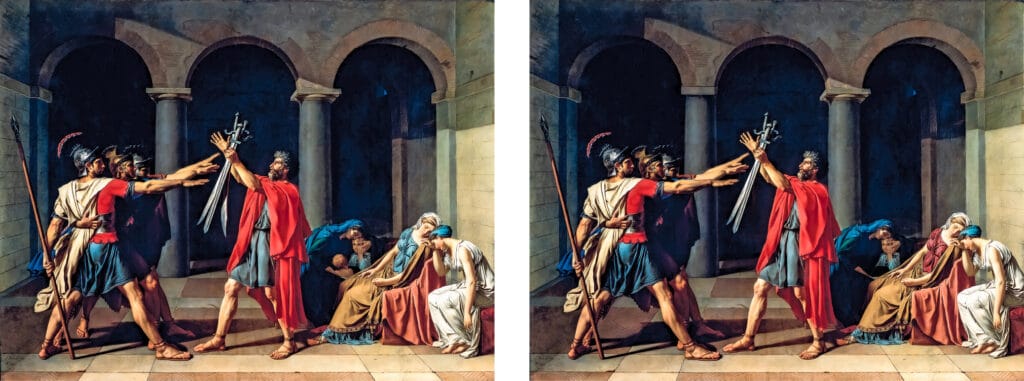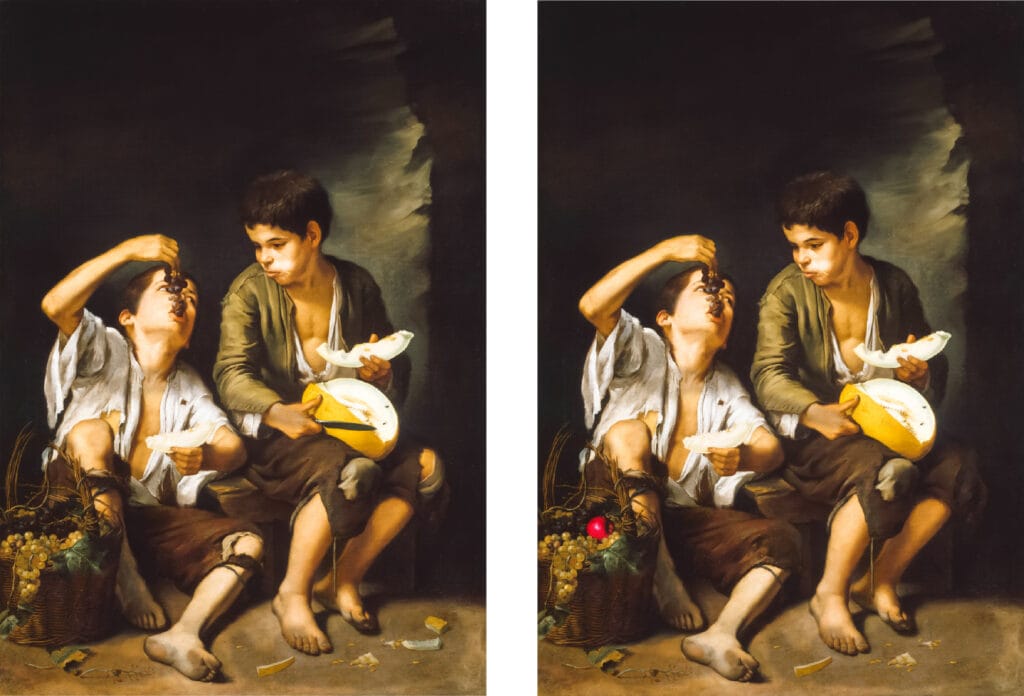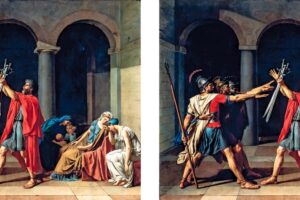Table of Contents
The Harmony Between Timeless Art and Engaging Visual Challenges
Some games never fade from popularity, and Spot the Difference is one of them. The rules are simple — find the differences between two seemingly identical images — yet the challenge can be endlessly varied. When these puzzles are based on classic paintings, they become more than a pastime; they turn into an experience that blends mental stimulation with cultural enrichment.
With spot the difference famous paintings, you’re not just looking for missing objects or changed colors — you’re stepping into a world of centuries-old artistry, where every brushstroke has purpose, and every detail tells a story. The folds of a dress, the glint of light on a goblet, the expression in a subject’s eyes — each difference you find is a new way to connect with history.
In this comprehensive guide, we’ll explore why spot the difference classic art puzzles captivate players of all ages, which paintings work best, how we select them for our curated collection, and why our digital flipbook format makes these masterpieces accessible to everyone.
1. The Allure of Spot the Difference Classic Paintings
The magic of spot the difference famous paintings lies in their depth. Unlike simple cartoon scenes or abstract patterns, classic artworks are rich with layers of meaning, intricate textures, and subtle elements that invite deep observation.
A puzzle based on The Milkmaid by Vermeer, for example, draws you into the quiet domesticity of a 17th-century kitchen. While searching for differences, you notice the light streaming from the window, the texture of the bread, and the stillness of the moment.
Each game becomes an art appreciation exercise in disguise — the more you look, the more you see. This dual engagement — art and puzzle-solving — makes the experience intellectually satisfying and emotionally rewarding.
2. The Right Choice for Everyone: Why They Resonate Across Ages and Interests
One of the greatest strengths of spot the difference classic paintings is their universal appeal. They cross age boundaries and connect generations.
For Seniors
Classic paintings often evoke memories of museum visits, school lessons, or personal interests in art history. Combined with gentle puzzle challenges, they provide a way to stay mentally active without strain.
For Adults
Adults enjoy the balance between challenge and relaxation. They can immerse themselves in beautiful works of art while exercising focus and patience.
For Children
With careful curation, even children can enjoy classic paintings. Scenes with clear storytelling and bright details spark curiosity and make learning about art history fun.
The result is a puzzle type that works in family settings, educational environments, and solo play — a bridge between entertainment and education.
3. Classic Art Styles That Shine in Spot the Difference
Not every painting style is equally suited to spot the difference classic art, but several lend themselves beautifully to the format:
- Baroque – High contrast, dramatic lighting, and expressive compositions (The Calling of Saint Matthew – Caravaggio).
- Rococo – Lighthearted elegance and intricate detail (The Swing – Fragonard).
- Neoclassicism – Strong lines and order that make differences stand out logically (The Death of Socrates – Jacques-Louis David).
- Impressionism – Layered textures and colors that can hide subtle variations.
- Genre Painting – Relatable scenes of everyday life (The Milkmaid – Vermeer).
4. Famous Paintings That Work Brilliantly for Spot the Difference
Some masterpieces feel almost designed for puzzles because they combine clear narrative with abundant detail:
- The Milkmaid – Johannes Vermeer, c. 1657–1658
- The Swing – Jean-Honoré Fragonard, c. 1767
- The Death of Socrates – Jacques-Louis David, 1787
- The Calling of Saint Matthew – Caravaggio, 1599–1600
- The Return of the Prodigal Son – Rembrandt, 1661–1669
Each of these paintings provides a rich visual playground for puzzle creation, whether in spot the difference famous paintings or jigsaw form.
5. Our Human History: 700 Years of Timeless Stories
When you engage with spot the difference classic paintings, you’re connecting with centuries of artistic heritage. These works span more than 700 years — from medieval religious art to 19th-century romantic landscapes — capturing everything from grand historical events to the quiet rhythms of daily life.
In each puzzle, you see echoes of the past: the architecture of long-gone cities, the fashions of bygone eras, and the emotions that have remained constant through human history.
6. The Curation Process: Choosing the Right Classic Paintings
At Classic Art Puzzles, our curation process ensures that every puzzle is both beautiful and playable.
- We filter out paintings with inappropriate content for general audiences.
- We enhance clarity, restoring faded colors or details obscured by age.
- We select works with enough visual richness to support multiple differences without feeling forced.
This careful selection means that our spot the difference classic art puzzles are as enjoyable to look at as they are to solve.
(Read more about our process on our About Us page)
7. The Cognitive and Cultural Benefits
Engaging with spot the difference famous paintings brings both mental and cultural rewards:
- Observation and visual acuity – Spotting differences in classic artworks sharpens attention to subtle visual cues.
- Memory and processing – Remembering patterns and positions strengthens spatial awareness and short-term recall.
- Stress relief – Immersive puzzle-solving promotes a calm, focused state of mind.
- Cultural appreciation – Engaging with masterpieces fosters deeper understanding of art history.
Research supports how puzzles and mentally stimulating activities contribute to stronger cognitive health. A recent Washington Post–cited study published in JAMA found that a combination of cognitive training, exercise, and healthy diet improved processing speed and executive function in older adults—even in those at elevated risk for dementia.
These findings underscore how beautifully spot the difference classic art puzzles bridge mental exercise with cultural richness—providing not only a satisfying visual endeavor but also a meaningful way to support brain health and celebrate art.
8. The Digital Flipbook Advantage for Spot the Difference Classic Paintings
At Classic Art Puzzles, we’ve embraced a format that blends tradition with innovation: the digital flipbook.
Advantages include:
- Instant global access — no shipping delays.
- High-resolution images with interactive tools.
- Adjustable difficulty through zoom and view modes.
- Environmentally friendly — no paper waste.
It’s the perfect way to enjoy spot the difference classic paintings without sacrificing quality or authenticity.
Explore our free to play flipbooks and discover the beauty of puzzle-solving in a modern, accessible format.
9. How We Adapt Famous Paintings into Spot the Difference Puzzles
The transformation from masterpiece to puzzle involves:
- High-quality image sourcing from trusted museum archives.
- Digital restoration to bring out fine details.
- Subtle but fair alterations — changing an object’s color, adding or removing small elements, or modifying patterns.
This process ensures puzzles are challenging but respectful to the original artwork.
10. Classic Art Jigsaw Puzzles: A Companion to Spot the Difference
For those who enjoy tactile experiences, classic art jigsaw puzzles offer another way to interact with famous paintings. Completing a jigsaw helps you absorb the artwork’s details, which can later enhance your performance in spot the difference games.
11. Resources to Find Classic Art Puzzles (Spot the Difference & Jigsaw)
If you want to explore beyond our collection, here are trusted resources:
- Classic Art Puzzles – curated spot the difference and jigsaw puzzles in classic art.
- The Met Store – fine art reproductions and puzzles.
- National Gallery Shop – puzzles of iconic artworks.
12. How to Play Spot the Difference Classic Paintings Online
- Use full-screen mode for better immersion.
- Work in a well-lit environment to reduce eye strain.
- Play with friends or family for shared fun and collaboration.
13. Expanding Your Collection: From Classic to Legendary
Once you’ve tried the great masters, explore themed sets — seasonal scenes, portraits, or landscapes — to keep the experience fresh.
14. Why Spot the Difference Classic Paintings Are Here to Stay
Their timelessness lies in both the game’s simplicity and the artworks’ enduring appeal. People will always enjoy the thrill of discovery, and the stories told through these paintings will remain relevant for generations.
15. Try Our Collection Today
You can browse, play, and enjoy free spot the difference classic paintings in our digital flipbook catalog, or purchase premium editions for lasting enjoyment.
Play Free Spot the Difference Classic Paintings/ Find 5 Differences





